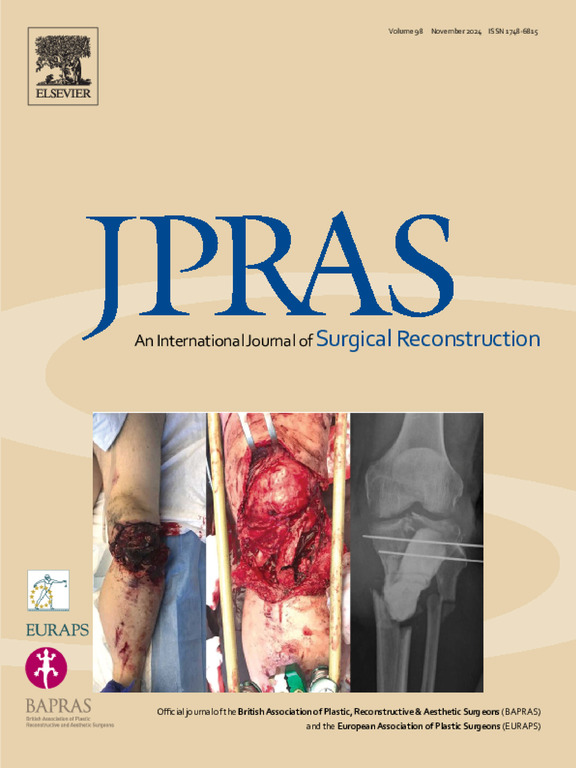Free tissue transfer for limb salvage following acute diabetes-related foot infections: A multicentre outcome study of success and failure
IF 2
3区 医学
Q2 SURGERY
Journal of Plastic Reconstructive and Aesthetic Surgery
Pub Date : 2025-03-05
DOI:10.1016/j.bjps.2025.03.003
引用次数: 0
Abstract
Background
In cases of limb-threatening diabetes-related foot infections (DFIs), the primary goal of treatment is to control the infection while maintaining as much functional limb as possible. Aggressive surgical debridement is one of the cornerstones of treatment. Once the infection is controlled, extensive soft tissue defects with exposed vital structures such as bone or joint may remain, limiting the mobility of the patient and posing a risk for the development of new (deep) infections. One possible treatment option for these soft tissue defects is free tissue transfer (FTT). Although reported FTT success rates in diabetic foot ulcers are over 90%, patient selection and indications for FTT in diabetic foot disease vary widely in the literature, and little has been described about FTT after limb-threatening DFI.
Methods
This multicentre, retrospective study included patients that underwent FTT after a limb-threatening DFI between 01-01-2017 and 01-03-2024 in four Dutch hospitals. The primary outcome was flap success rate within 30 days. Secondary outcomes included limb salvage within 90 days, incidence of major amputation during follow-up, ulcer recurrence, and ambulation.
Results
Fourteen patients with a limb-threatening DFIs were included. The flap survival rate within 30 days was 78.6% (11/14). Limb salvage within 90 days was 92.9% (13/14). The total incidence of major amputations during follow-up was 28.6% (4/14), performed after flap failure in one and ulcer recurrence in three patients.
Conclusion
Our results suggest that FTT following acute limb-threatening DFI is technically feasible and may increase the chance of limb salvage.
求助全文
约1分钟内获得全文
求助全文
来源期刊
CiteScore
3.10
自引率
11.10%
发文量
578
审稿时长
3.5 months
期刊介绍:
JPRAS An International Journal of Surgical Reconstruction is one of the world''s leading international journals, covering all the reconstructive and aesthetic aspects of plastic surgery.
The journal presents the latest surgical procedures with audit and outcome studies of new and established techniques in plastic surgery including: cleft lip and palate and other heads and neck surgery, hand surgery, lower limb trauma, burns, skin cancer, breast surgery and aesthetic surgery.

 求助内容:
求助内容: 应助结果提醒方式:
应助结果提醒方式:


